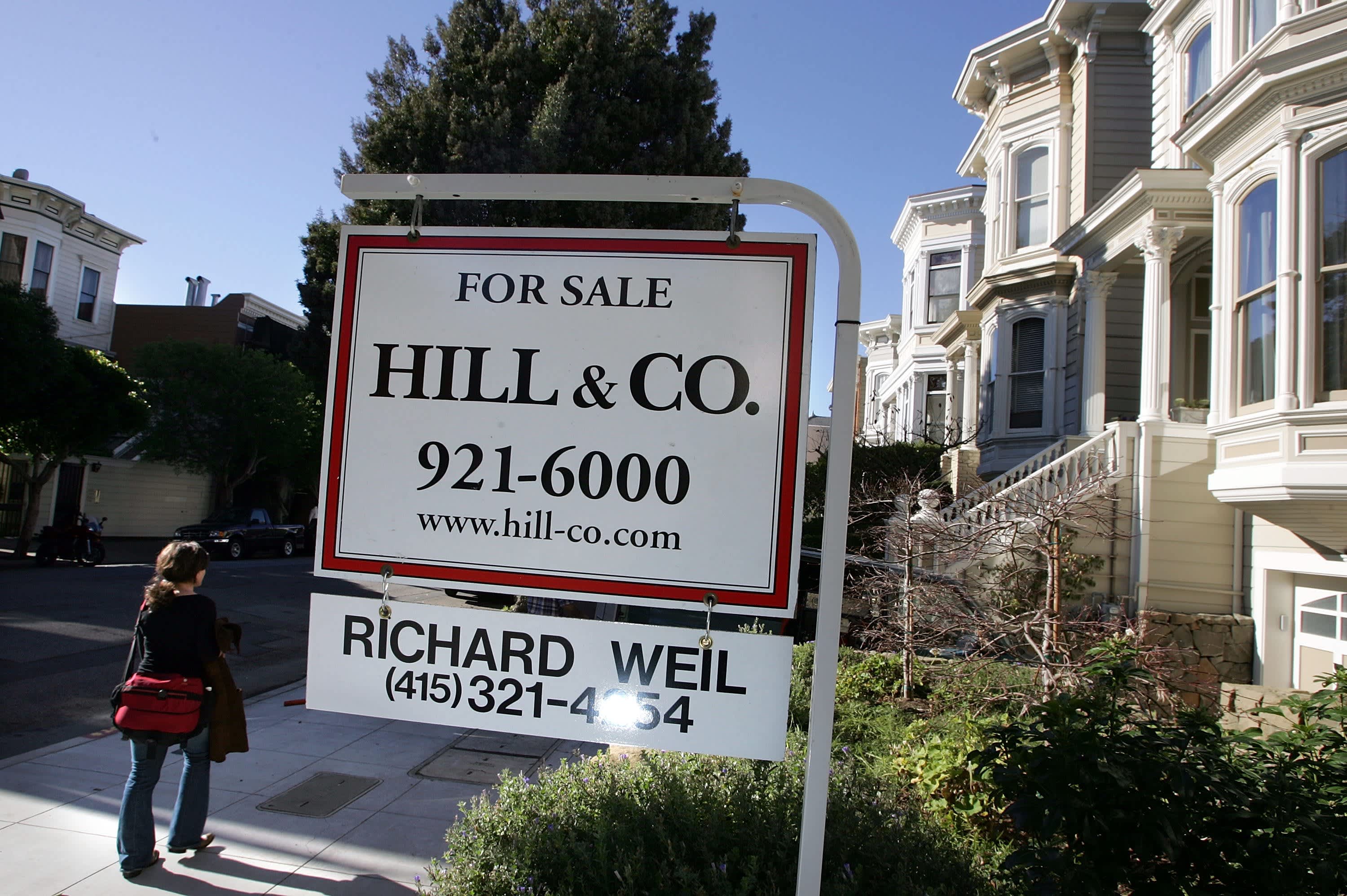A sign is seen in front of a home for sale in San Francisco.
Justin Sullivan | Getty Images
The median price of a San Francisco Bay Area home sold last month fell slightly compared to the prior-year period, marking the first annual drop since the bottom of the last housing crash, seven years ago, according to CoreLogic.
In March, the median price was $830,000, down 0.1% compared with March 2018. The decline came as price gains had been shrinking for several months. Before last month, the median sale price had risen annually for 83 consecutive months since April 2012. Both May and June 2018 had the highest ever median sale price: $875,000.
Prices follow sales, and sales have been running extraordinarily low since last summer, when mortgage rates spiked.
“It reflects a trend that began in mid-2018 when home sales slowed and inventory grew, forcing sellers to be more competitive,” Andrew LePage, a CoreLogic analyst, wrote in a release. “The year-over-year increase in the region’s median sale price was 16.2% in March last year. But after that, the gains in the median gradually decreased each month and fell to the 2 to 3% range early this year and then disappeared this March.”
Sales of San Francisco homes – including Alameda, Contra Costa, Marin, Napa, Santa Clara, San Francisco, San Mateo, Solano and Sonoma counties – were nearly 15% lower in March compared with a year ago. That was the lowest March reading in 11 years. Sales have been at 11-year lows since December and have fallen on a year-over-year basis for the past 10 months.
These numbers are based on closings, so they were likely deals signed in January and February. The market should have been improving, as mortgage rates were falling, the government shutdown was over, and the stock market was surging.
“Those factors bode well for stronger sales than we’ve seen in recent months, but any impending upswing in activity wasn’t evident in the March data,” LePage said. “Beginning in late spring last year, some potential buyers got priced out and others simply stepped out of the market amid concerns prices were near a peak.”
Buyers overall, and especially in high-priced markets like San Francisco, are extremely interest rate-sensitive. The average rate on the 30-year fixed spiked to just over 5% last November, according to Mortgage News Daily, and then fell back again in December. In March it took a deep dive to around 4%, but has since climbed back to around 4.5%.
The next two months will be key to understanding whether all the weakness in prices and sales is due to fluctuations in interest rates, or whether the market has simply hit an affordability wall. Inventory is rising, but largely because homes are sitting on the market longer, not because there are a ton of new listings.
This tech-heavy housing market could also be impacted to the up or downside from new IPOs including Lyft, Pinterest, Uber, Slack and Airbnb.

